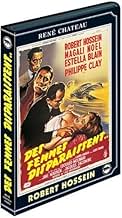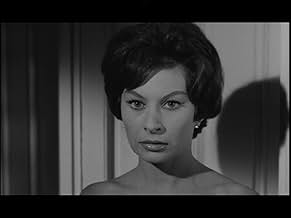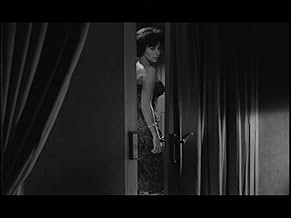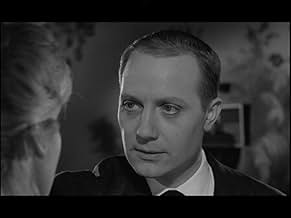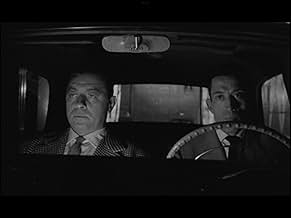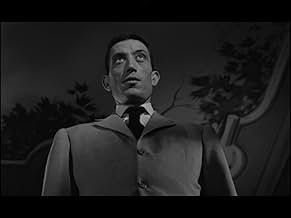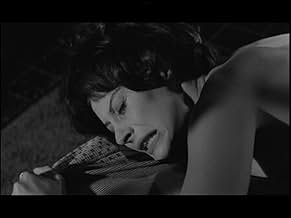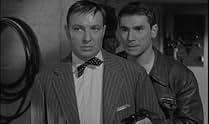Aggiungi una trama nella tua linguaPierre Rossi and Béatrice live in the same block of flats in Marseille and love each other. One night, Béatrice leaves her apartment. Pierre knows that his fiancée goes to a rendezvous, but ... Leggi tuttoPierre Rossi and Béatrice live in the same block of flats in Marseille and love each other. One night, Béatrice leaves her apartment. Pierre knows that his fiancée goes to a rendezvous, but she would not tell him more than just that. Worried, Pierre follows her but he is attacked... Leggi tuttoPierre Rossi and Béatrice live in the same block of flats in Marseille and love each other. One night, Béatrice leaves her apartment. Pierre knows that his fiancée goes to a rendezvous, but she would not tell him more than just that. Worried, Pierre follows her but he is attacked and stolen his identity papers by two men, Tom and Nasol, on the payroll of Quaglio, one ... Leggi tutto
- Regia
- Sceneggiatura
- Star
Recensioni in evidenza
The film begins as a neighborhood drama, in an atmosphere somewhat similar to Italian neorealist films. Pierre and Beatrice are two young people from a proletarian background. They are neighbors, in love and engaged. Beatrice wants to go out for a night out, reclaiming her independence, at least until marriage. Pierre is jealous and follows her, but a couple of gangsters are watching the place where the girls gather for the party and attack the young man. Stubbornly, he continues the pursuit and his fears prove to be well founded. The party is an opportunity to recruit young women for prostitution and 'export' across the Mediterranean. The confrontation between Pierre and the mobsters increases in intensity, and from here the film takes on the allure of a film noir, with the hero alone facing the violence of the bandits in an attempt to save his beloved.
Revisited more than 60 years after its making, the film is uneven, mixing elements of beautiful cinematography with old-fashioned details that haven't held up as well over time. The story is simple and takes place over the course of a few hours of the same night, which makes it attractive and easy to follow. There is also a crescendo in the story and a quickening of the pace towards a memorable final scene. The generic and the cinematography are well done, building a 'film noir' atmosphere. The music is exceptional - jazz performed by percussionist Art Blakey and his band, outstanding jazz artists, among those who performed in France in the 1950s. Less successful are the sets, especially in the outdoor scenes. Filming took place, it seems, entirely in studios and the cardboard sets seem almost visible. La Nouvelle Vague that had just begun that year 1959 would almost completely sweep away this style of filming, still extremely used in French films of the 50s. Some very interesting actors also appear. Robert Hossein, a complex actor, today unfairly forgotten, plays the main role. His Pierre is a positive hero who does not disguise his shadows. Estella Blain who plays the role of Beatrice looks a lot like her generational colleague, Brigitte Bardot. She would prioritize her career in music, and die quite young. The bad guys are also represented individually and with shades of humor. I especially noticed Philippe Clay, an actor that I do not think that I had ever met before. This film made at a turning point in the history of cinema offers quite a few good reasons for viewing or re-watching even today.
As indicated earlier, Hossein is not the sharpest knife, but nothing prepares you for his stupid decisions, whereby one moment he has the upper hand, next he is at his nemesis' mercy. The worst moment is when he hands the gun to Blain, tells her to shoot the villain, and he gets a stick to try to reach a gate key which the baddy had thrown away. After seeing a few of those incredibly infantile decisions, I really had to make an effort to watch the rest. I could not wait for the end, which came rather lukewarm.
Good photography contrasts with very poor, totally unrealistic, punchup sequences. The script borders on the pathetic. In real time, it is not a long film. It just seems overlong.
Not recommended.
After decades, only a decent film defined by good intentions because the thrill, emotion and presumed tension are the only basic ingredients.
The cliches, in manicheic skin are more than present and the unrealism of few scenes are sources of smiles. But it is only a modern fairy story, predictable and interesting for the some virtues of image.
Warning about dirty love affaires, the good one versus bad guys, fight scenes - obvious too many - and some twists. Testimony about a time and about the early years of Edouard Molinaro career.
Lo sapevi?
- QuizThe action takes place in a single night's time.
- ConnessioniReferenced in Le Dee dell'amore (1965)
I più visti
Dettagli
- Tempo di esecuzione1 ora 25 minuti
- Colore
- Mix di suoni
- Proporzioni
- 1.66 : 1
Contribuisci a questa pagina


